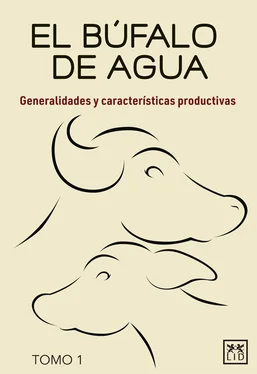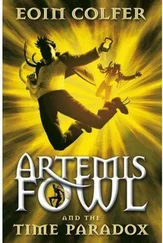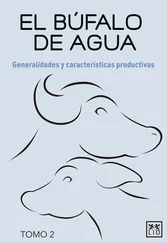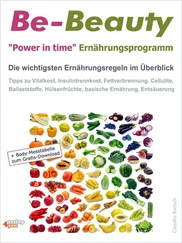[5] [5b] [5c] [5d] [5e] [5f] [5g]Rosa, G. de, et al. «The welfare of dairy buffalo». Italian Journal of Animal Science, 2009; 8:103-116.
[6] [6b]Paranhos da Costa, M., Schmidek, A. y Toledo, L. Mother- Offspring Interactions in Zebu Cattle. Reproduction in Domestic Animals, 2008; 43(s2):213-216.
[7] [7b]Hötzel, M. J., Ungerfeld, R. y Quintans, G. «Behavioural responses of 6-month-old beef calves prevented from suckling: influence of dams milk yield». Animal Production Science, 2010; 50(10):909-915.
[8] [8b] [8c] [8d]Lynch, E., McGee, M. y Earley, B. «Weaning management of beef calves with implications for animal health and welfare». Journal of Applied Animal Research, 2019; 47(1):167-175.
[9]Stěhulová, I., Valníčková, B., Šárová, R. y Špinka, M. «Weaning reactions in beef cattle are adaptively adjusted to the state of the cow and the calf». Journal of Animal Science, 2017; 95(3):1023-1029.
[10] [10b]Purohit, G. N. «Gestation and fetal development in the buffalo». En Purohit, G. N. (Ed.) Bubaline Theriogenology. International Veterinary Information Service Ithaca. New York, 2020, pp. 119-147.
[11] [11b] [11c] [11d] [11e]Das, G. K., Kumar, A., Dangi, S. S. y Khan, F. A. «Partirition and puerperium in the buffalo». En Purohit, G. N. (Ed.) Bubaline Theriogenology. International Veterinary Information Service Ithaca New York, 2020, pp. 238-251.
[12]Lidfors, L. M., et al. «Behaviour at calving and choice of calving place in cattle kept in different environments». Applied Animal Behaviour Science, 1994; 42(1):11-28.
[13] [13b] [13c]Pérez-Torres, L. I. Particularidades del comportamiento materno y neonatal de ovinos y bovinos en el trópico. [Tesis de doctorado]. Facultad de Ciencias Agropecuarias. Universidad Autónoma de Morelos, 2019, pp. 157.
[14] [14b]Mora-Medina, P., et al. «Metabolic changes during brief periods of ewe–lamb separation at different ages». Animal Production Science, 2018; 58(7):1297-1306.
[15] [15b]Gordon, I. Controlled Reproduction in Cattle & Buffaloes. CAB International. Willingford, UK, 1996:432-66.
[16] [16b] [16c]Singh, P. K., Kamboj, M. L., Chandra, S. y Singh, R. K. «Effect of calf suckling dummy calf used and weaning on milk ejection stimuli and milk yield of Murrah buffaloes». Journal of Pharmacognosy and Phytochemistry, 2017; 6(1012-1015).
[17] [17b] [17c] [17d] [17e] [17f] [17g]Manteca, V. X. «Comportamiento maternal». En Manteca V, X. (Ed.) Etología Veterinaria. España: Multimédica Ediciones Veterinarias, 2017, pp. 277-299.
[18] [18b]Kumar, A. et al. «Performance of Murrah buffalo and their calves under weaning and suckling system». International Journal of Current Microbiology and Applied Sciences, 2017; 6:2452-2459.
[19] [19b] [19c] [19d] [19e] [19f] [19g]Neves, A. D. Comportamento materno-filial em búfalos (Bubalus bubalis) nas primeiras horas após o parto. [Mestre em Zootecnia]. Faculdade de Ciências Agrárias e Veterinárias câmpus de Jaboticabal. Universidade Estadual Paulista «Julio de Mesquita Filho», 2009, pp. 70.
[20] [20b] [20c]Drescher, K. y Roa, A. N. Comportamiento materno-filial de grandes rumiantes en el trópico. Mundo Pecuario, 2012; VIII (2):86-94.
[21] [21b] [21c]Gusmão-Couto, A. Ordenha sem bezerro ao pé em bubalinos. Brasil: Gráfica Jaraguá, 2019.
[22] [22b]Usmani, R., Dailey, R. y Inskeep, E. «Effects of limited suckling and varying prepartum nutrition on postpartum reproductive traits of milked buffaloes». Journal of Dairy Science, 1990; 73(6):1564-1570.
[23] [23b]Gusmão-Couto, A. Etología: Un estudio del comportamiento de búfalas, con el objetivo de aumentar la producción de leche. Tecnología en Marcha, 2011; 24:60-70.
[24]Rabidas, S. K., Gofur, M. R., Juyena, N. S., y Alam, M. G. «Controlled induction of parturition in the dairy buffaloes: an approach of success of buffalo breeding farm in Bangladesh». Asian Journal of Animal Sciences, 2015; 9:241-247.
[25] [25b]Oliveira, A. F., Quirino, C. y Bastos, R. «Effect of nursing behaviour, sex of the calf, and parity order on milk production of buffaloes». Revista Colombiana de Ciencias Pecuarias, 2017; 30(30):30-38.
[26] [26b]Murphey, R. M., Souza, L., Duarte, M. y Paranhos da Costa, M. «Communal suckling in water buffalo (Bubalus bubalis)». Applied Animal Behaviour Science, 1991; 28(4):341-352.
[27]Murphey, R. M., Paranhos da Costa, M. J. R., Gómez da Silva, R. y de Souza, R. «Allonursing in river buffalo (Bubalus bubalis): nepotism, incompetence, or thievery?» Animal Behaviour, 1995; 49(6):1611-1616.
[28] [28b]Paranhos da Costa, M. J. R., Andriolo, A., de Oliveira, J. F. S. y Schmidek, W. R. «Suckling and allosuckling in river buffalo calves and its relation with weight gain». Applied Animal Behaviour Science, 2000; 66(1):1-10.
[29] [29b] [29c]Napolitano, F., et al. «The behaviour and welfare of buffaloes (Bubalus bubalis) in modern dairy enterprises». Animal, 2013; 7(10):1704-1713.
[30]Víchová, J. y Bartoš, L. «Allosuckling in cattle: Gain or compensation?» Applied Animal Behaviour Science, 2005; 94(3):223-235.
[31]Hoogesteijn, R. y Hoogesteijn, A. «Conflicts between cattle ranching and large predators in Venezuela: could use of water buffalo facilitate felid conservation?» Oryx, 2008; 42(1):132-138.
[32]Costa, J. H. C., von Keyserlingk, M. A. G. y Weary, D. M. «Invited review: Effects of group housing of dairy calves on behavior, cognition, performance and health». Journal of Dairy Science, 2016; 99(4):2453-2467.
[33]Hedegaard, C. J. y Heegaard, P. M. H. «Passive immunisation, an old idea revisited: Basic principles and application to modern animal production systems». Veterinary Immunology and Immunopathology, 2016; 174:50-63.
[34]Paranhos da Costa, M. J. R., Galvão de Albuquerque, L., Eler, J. P., y de Vasconcelos, J. A. «Suckling behaviour of Nelore, Gir and Caracu calves and their crosses». Applied Animal Behaviour Science, 2006; 101(3-4):276-287.
[35] [35b]Bharti, P., et al. «Effect of weaning age on growth measurements and sero-biochemical parameters in Murrah buffalo calves». Indian Journal of Animal Sciences, 2018; 88:1305-1309.
[36]Bharti, P., et al. «Effect of lactation order on morphological traits of teat and udder in Murrah buffaloes». Journal of Animal Research, 2015; 5(3):561-565.
[37]Bharti, P. K., et al. «Impact of weaning age on post-partum reproductive performance and stress level in Murrah buffaloes». Indian Journal of Animal Sciences, 2017; 87(4):432-434.
[38]Napolitano, F., Rosa, G. y Sevi, A. «Welfare implications of artificial rearing and early weaning in sheep». Applied Animal Behaviour Science, 2008; 110(1-2):58-72.
[39]Grandinson, K. «Genetic background of maternal behaviour and its relation to offspring survival». Livestock Production Science, 2005; 93(1):43-50.
[40] [40b] [40c]Cruz-Cruz, L. A. de la, et al. «Effects of weaning on the stress responses and productivity of water buffalo in different breeding systems: A review». Livestock Science, 2019; 226:73-81.
[41] [41b]Alvez, P., Quintans, G., Hötzel, M. J. y Ungerfeld, R. «Two-step weaning in beef calves: permanence of nose flaps for 7 or 21 days does not influence the behaviour response». Animal Production Science, 2016; 56(5):866-870.
[42] [42b] [42c] [42d]Chen, Y., Arsenault, R., Napper, S. y Griebel, P. «Models and methods to investigate acute stress responses in cattle». Animals, 2015; 15(4):1268–1295.
[43]Tilbrook, A. J. y Ralph, C. R. «Hormones, stress and the welfare of animals». Animal Production Science, 2018; 58(3):408-415.
[44] [44b]O’Loughlin, A., McGee, M., Doyle, S. y Earley, B. «Biomarker responses to weaning stress in beef calves». Research in Veterinary Science, 2014; 97(2):458-463.
[45]Fazio, F., et al. «Evaluation of secondary stress biomarkers during road transport in rabbit». Livestock Science, 2015; 173:106-110.
Читать дальше












